Arm Day Workout – Biceps and Triceps Routine
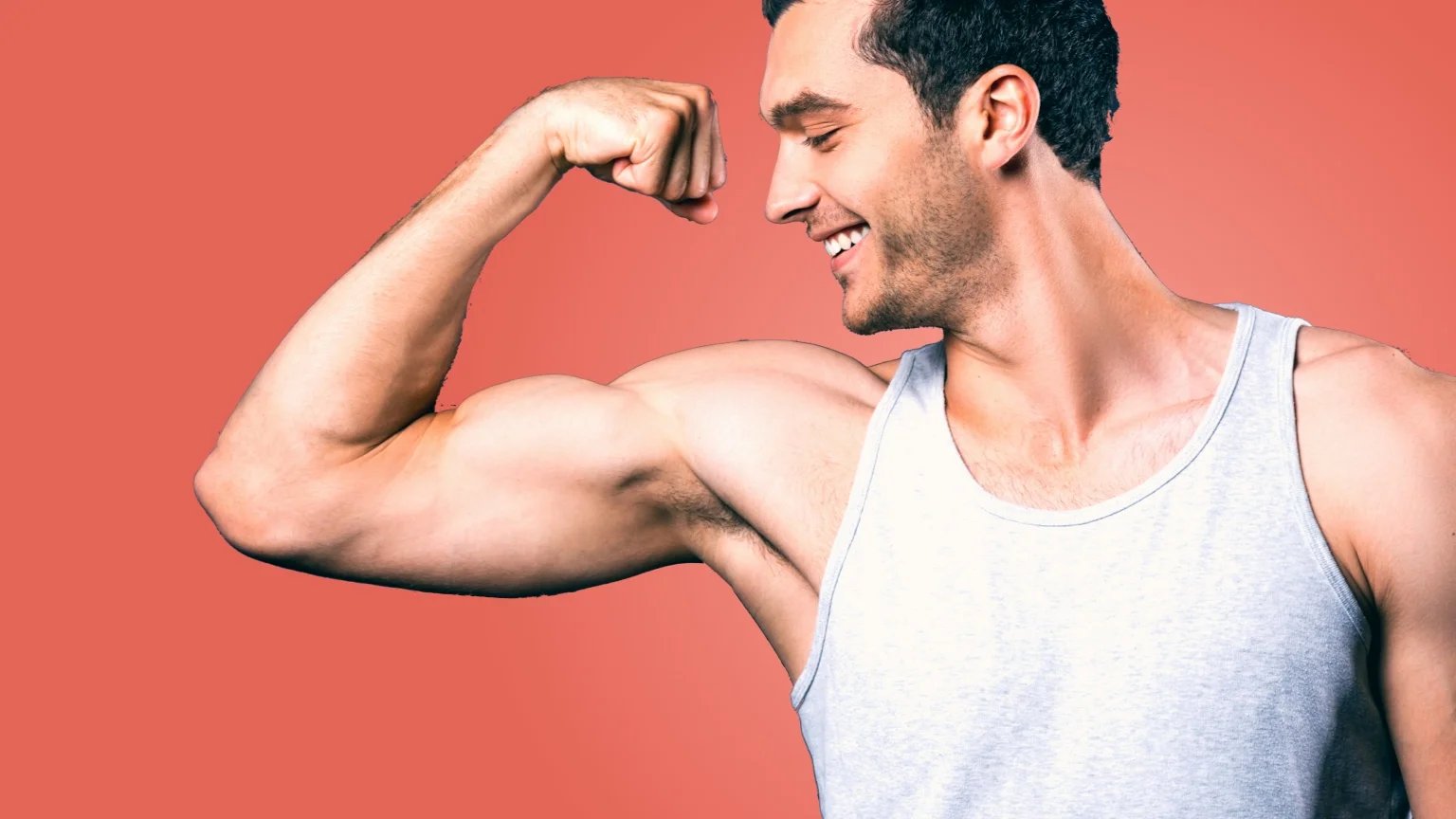
New
Build a workout routine for your personal fitness level and goals
Create a personalized workout plan using Gym Geek’s new AI tool. Gym Geek AI can generate a single workout or a structured routine for any fitness goal.
Powered by
Our arm day workout routine is designed to primarily target your biceps and triceps. You can use this workout to improve your muscular endurance and strength in your arms. Dedicating a day of your routine to arms allows you to achieve more defined and bigger arm muscles!
This arm day workout focuses on exercises that isolate your arms muscles, with 4 exercises for your biceps and 3 for your triceps. We use a high number of reps for each exercise, with a short rest between sets, to keep the intensity high.
We recommend you train arms once or twice per week, either as a dedicated day in a bro split or as part of your pull and push days.
Training with an arms day
Dedicating a day of your workout routine to arms allows you to focus on strengthening and growing your biceps and triceps.
Dividing your workout days by muscle group is a style of working out called split training. Following a split routine, you will dedicate one or more days in your routine to your arms. You can either dedicate the whole day to arms, or (more commonly) combine your workout with other muscle groups.
If you are following a bro split, you can use this workout as your arms day. The bro split divides your training sessions to target a specific muscle group on each day. For example, Mondays might be chest day. Tuesdays, shoulder day, and so on. A typical bro split might look something like this:
- Monday – Chest
- Tuesday – Shoulders
- Wednesday – Legs
- Thursday – Back
- Friday – Arms
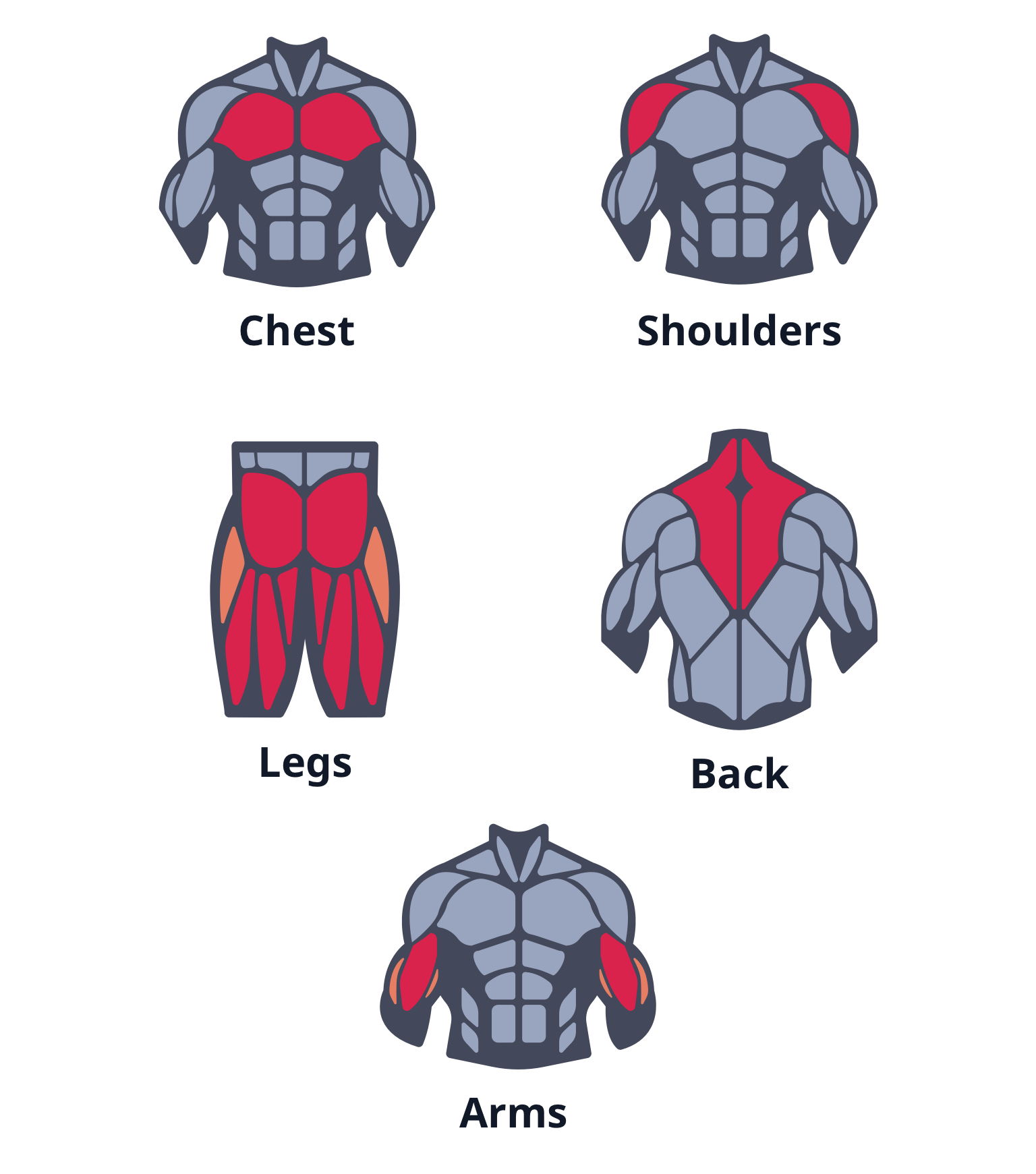
Arm muscles
Biceps and brachialis
Your biceps are the large muscles on the front of your upper arms. Although your biceps is a single muscle, it is made up of two heads – called the long and short heads. Together, they play a key role in forearm flexion and rotation and strong biceps are beneficial for everyday activities and exercises.
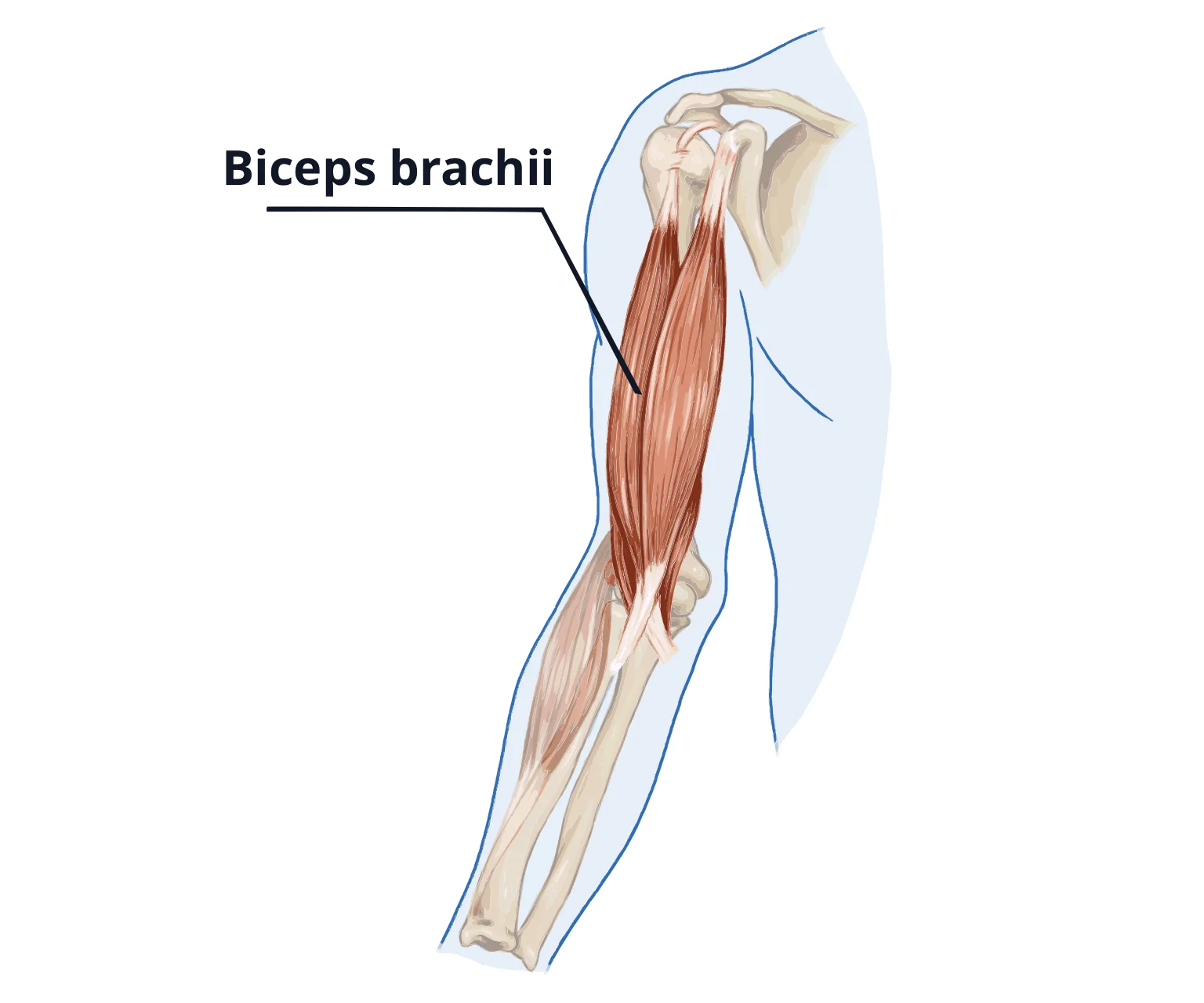
Different variations of bicep curl target different parts of your biceps. For example, hammer curls target the long head of the biceps, while preacher curls target the short head.
Another key muscle in your upper arm is the brachialis, which is a small muscle beneath the bicep muscles. This much is an elbow flexor, meaning it contracts to bend your elbow and lift up your body during the pull-up movement.
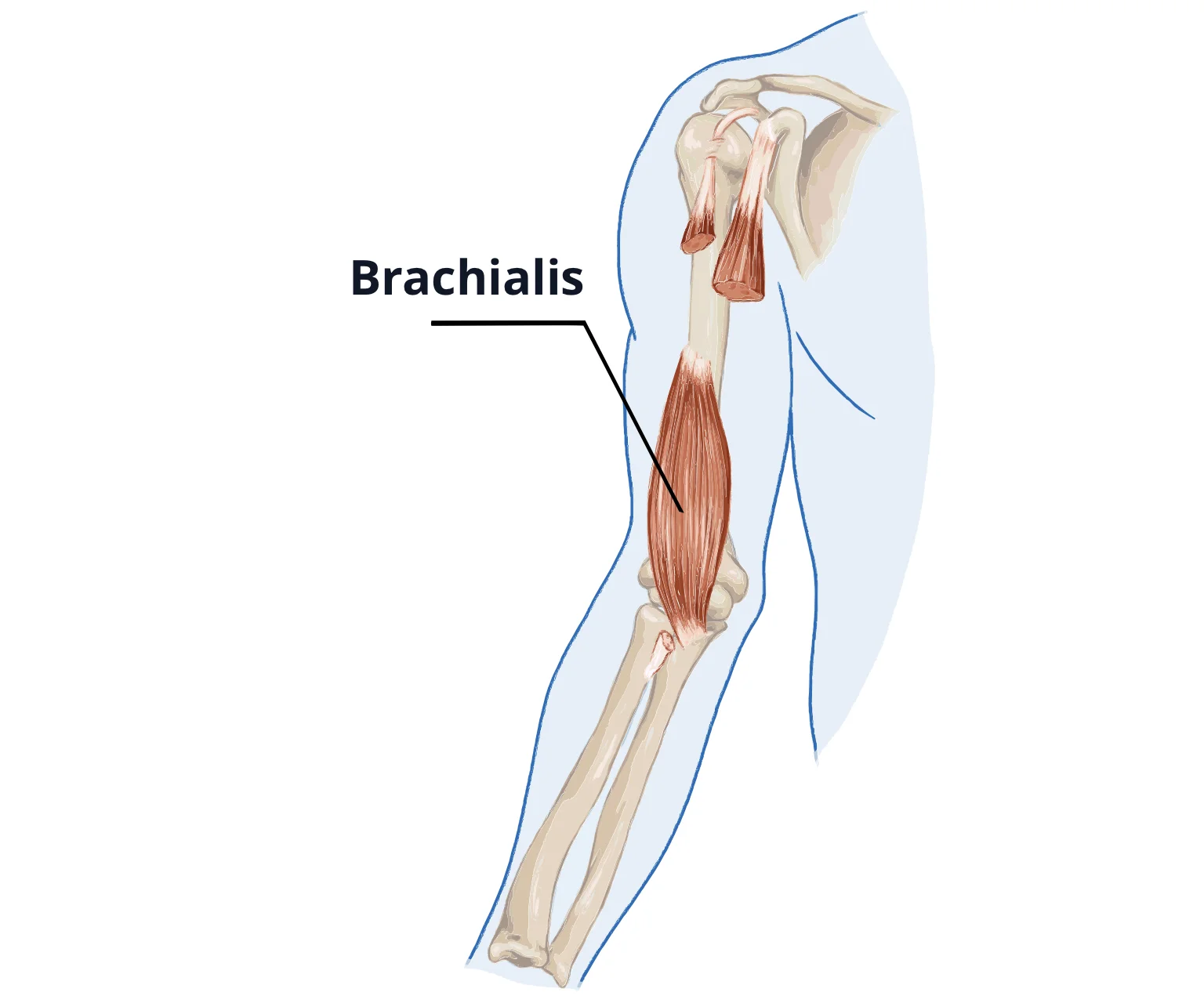
Hammer curls and preacher curls put more emphasis on your brachialis muscle.
Brachioradialis and forearm flexors
Two key muscles in your forearm are the brachioradialis and your forearm flexors.
Your brachioradialis is a muscle in your forearm. It’s responsible for flexing your forearm at your elbow. It also helps with pronation and supination of your forearm (where you rotate palms between facing up and down).
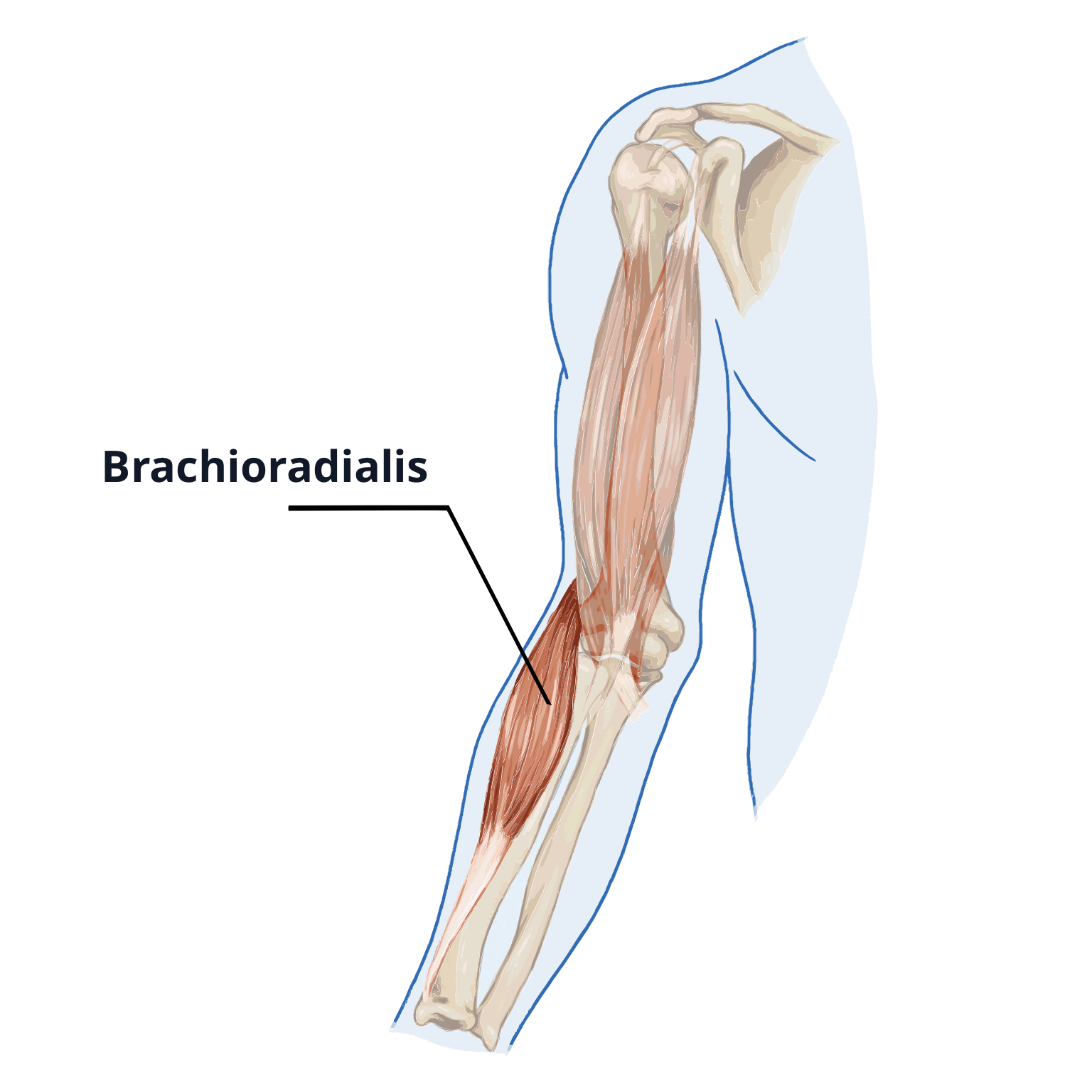
Your forearm flexors are a group of muscles inside your forearm, and work to bend your wrist and fingers.
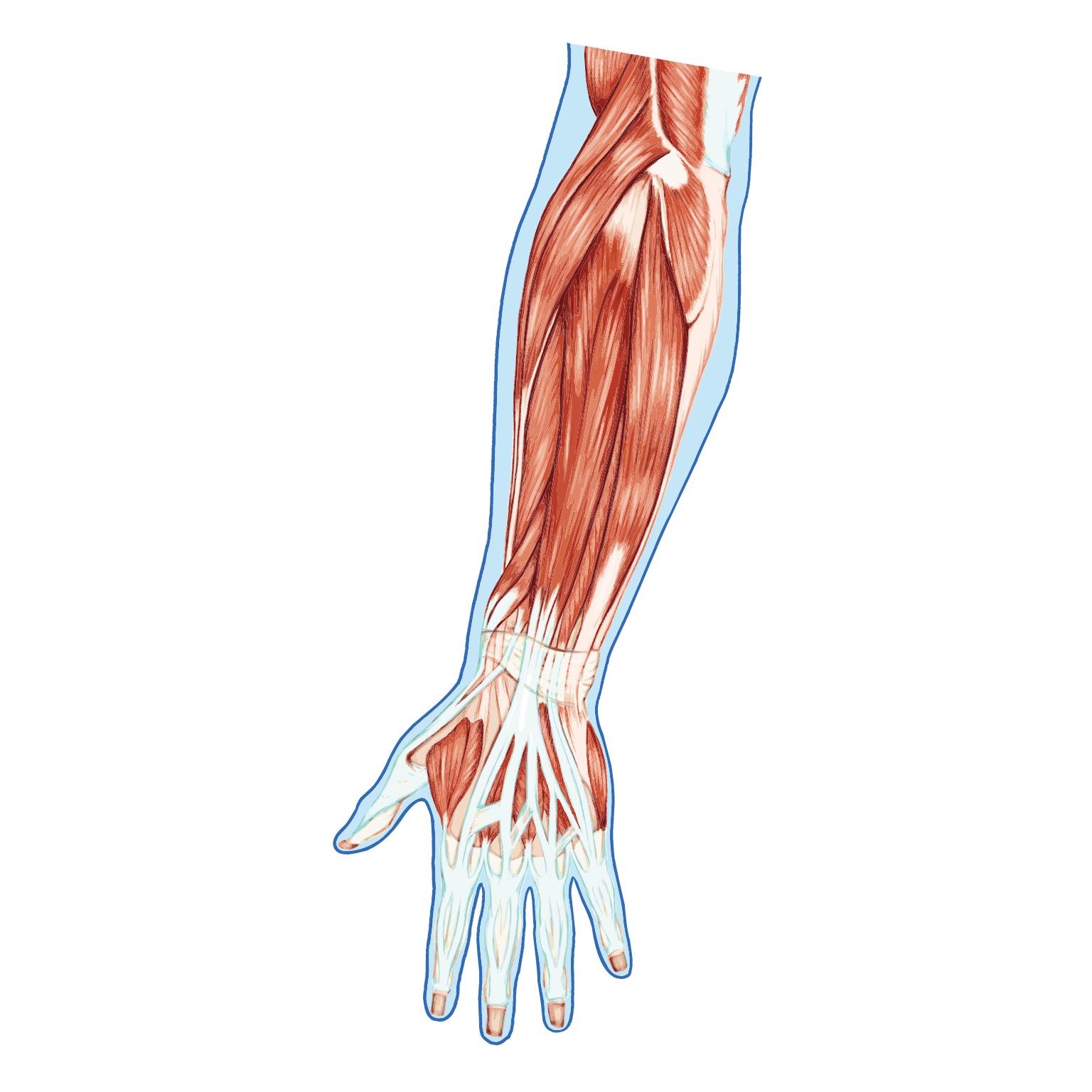
Triceps
Your triceps are at the back of your arm, and play a particular role in pushing movements. The triceps have three heads, known as the long head, the lateral head, and the medial head.
- Long Head – The long head of your triceps originates from your scapula. This head helps with extension at the elbow and also adduction and extension at the shoulder joint. It runs down the back of your arm to your ulna (the long forearm bone).
- Lateral Head – The lateral head originates from your humerus. It is positioned on the outside of your upper arm and gives your tricep its unique ‘horseshoe’ shape and width. It inserts into the olecranon process of the ulna. The lateral head allows rapid and forceful arm extensions, and is key in any pushing or punching movement.
- Medial Head – The medial head originates from your humerus to your ulna, and plays a key role in precision movements and stability.
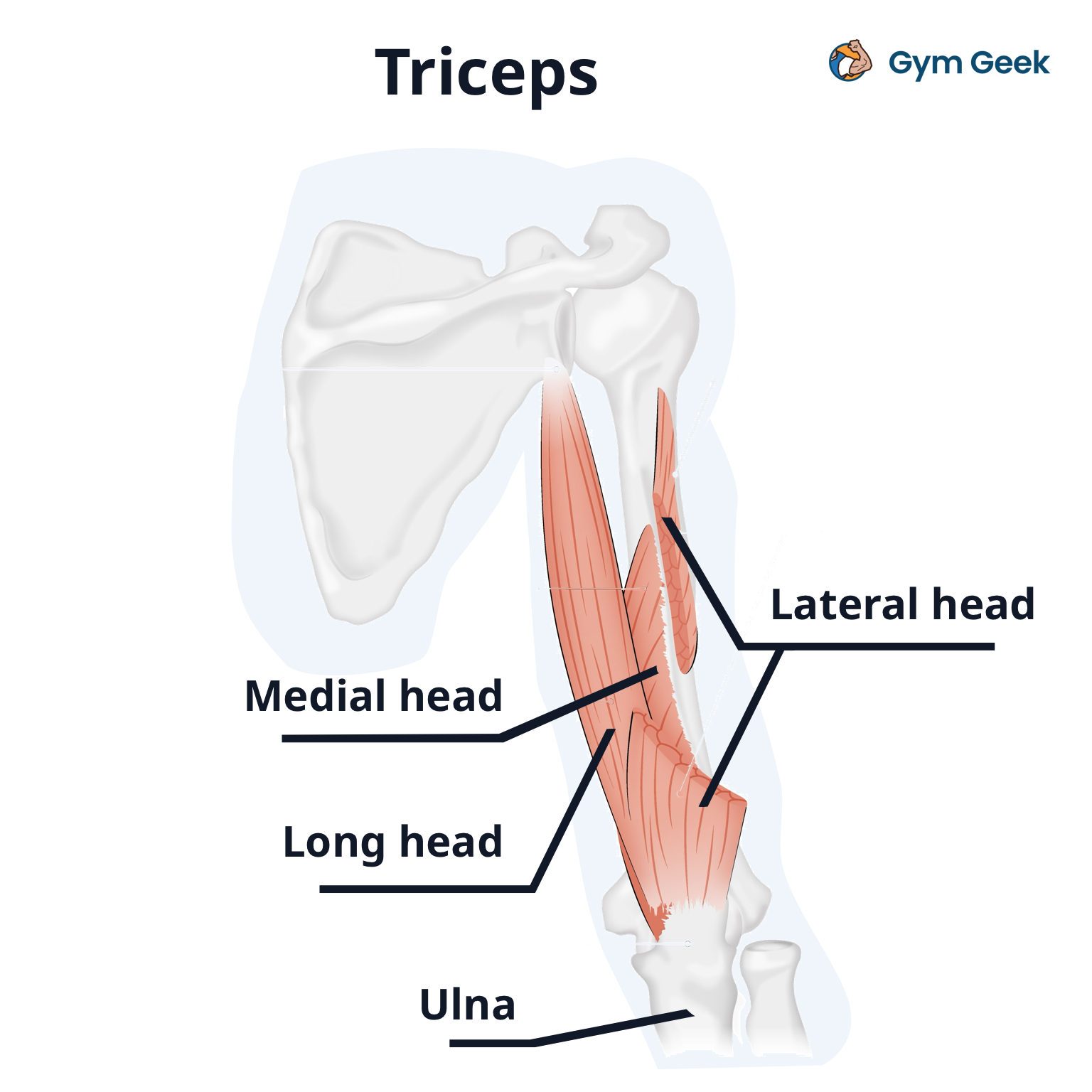
The triceps are primarily responsible for the extension of the elbow joint, which allows the arm to straighten.
There are three key tricep isolation exercises – tricep extensions, tricep kickbacks and tricep pushdowns – that specifically target your triceps. You generally put 3-4 of these isolation exercises to include into your arm day routine.
Structure of the arm day workout
In our arm day workout, we’ve tried to include exercises that target all of your key muscles. This means:
- For biceps – We’ve included exercises like bicep curls.
- For brachialis and brachioradialis – We’ve included curl variations like hammer curls and preacher curls.
- For triceps – We’ve included 1 tricep pushdown and 2 tricep extension exercises.
In total, we’ve included 7 isolation exercises for your triceps and biceps. Because these work all of the targeted muscles, with variations to emphasize different parts of your triceps and biceps, it makes for an effective arm day workout.
We have avoided compound exercises that also work your chest or shoulders, because this workout is designed for a bro split.
The Arm Day Workout
- EZ bar curls – 4 sets of 8-12 reps
- Seated double arm dumbbell curls – 4 sets of 8-12 reps
- Standing hammer curls – 4 sets of 8-12 reps
- Preacher curl machine – 3 sets of 8-12 reps
- Triceps rope pushdowns – 4 sets of 15-20 reps
- Triceps overhead extensions – 4 sets of 15 reps
- Skull crushers – 3 sets of 12-15 reps
Arm day exercises
EZ bar curls
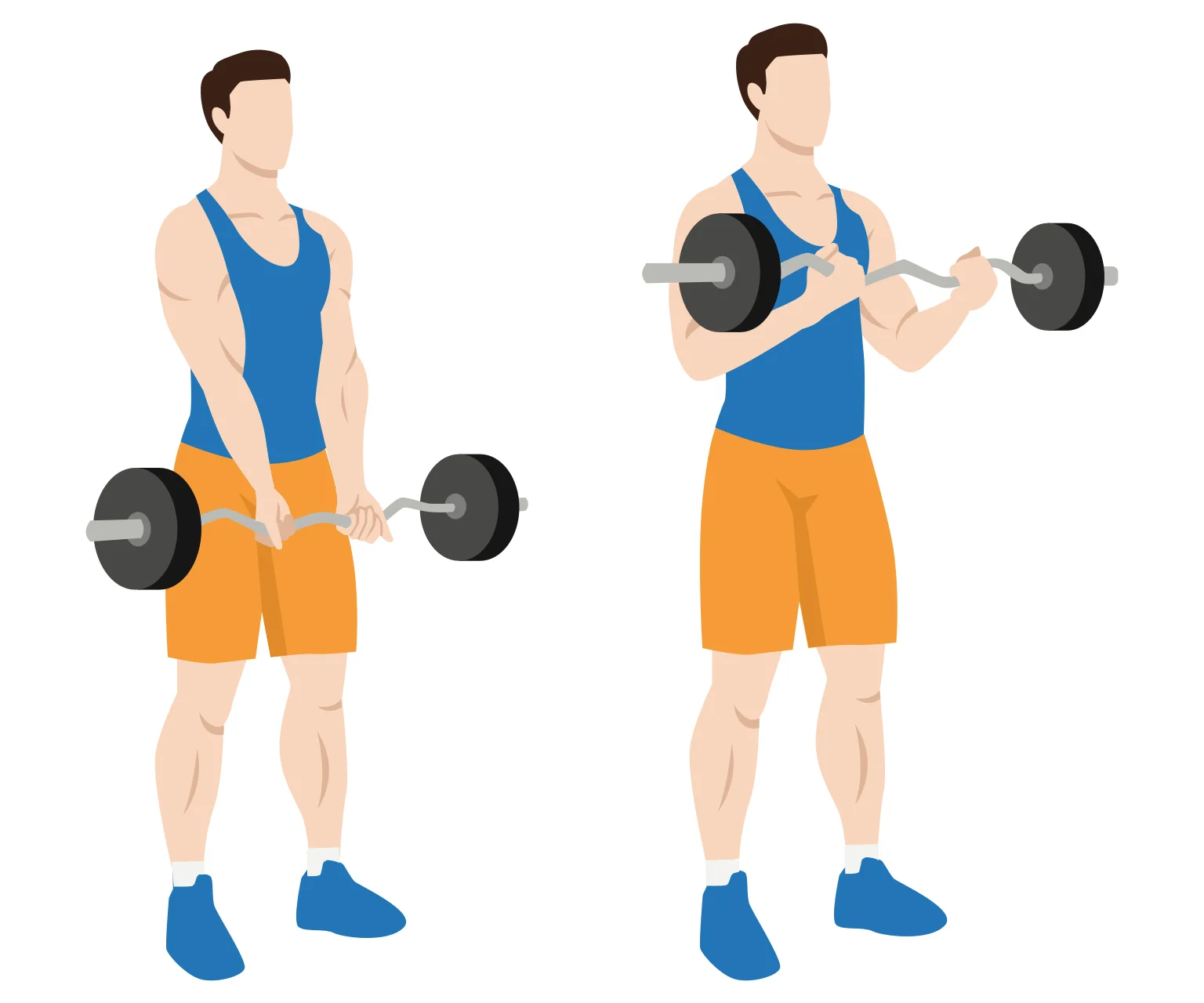
The first exercise in the arms day workout routine is the EZ bar bicep curl. It primarily targets your bicep muscles, but also engages your brachialis (the muscle beneath your biceps) and brachioradialis (a key muscle in your forearm).
The use of an EZ bar reduces the strain on your wrists and elbows compared to using a standard barbell or dumbbells.
For general training, we recommend 3-4 sets of 8-12 reps for all the bicep isolation exercises in this workout. If you’re new to weightlifting, start with fewer sets and a lighter weight to master the proper form before progressing.
How to do
- Stand upright with your feet shoulder-width apart. Hold the EZ bar at hip level, with an underhand grip (palms facing away from your body).
- With your upper arms stationary, curl the EZ bar up towards your chest.
- Squeeze your biceps at the top of the movement.
- Finally, slowly lower the bar back to the starting position.
- Repeat for the desired number of reps.
Read more: How to Do a EZ Bar Curl
Seated double arm dumbbell curls

The seated position of this curl exercise minimizes the involvement of other muscles. This ensures your biceps are doing all the work. Isolating your biceps fully allows you to lift heavier weights, which maximizes the effectiveness of your workout. This can lead to more noticeable growth in your biceps.
How to do
- Sit on a bench, holding a dumbbell in each hand. Your palms should be facing towards your body.
- Without moving your upper arms, slowly curl the weights up.
- As you lift, rotate the dumbbells so your palms are facing your body. Lift until your biceps are fully contracted.
- Hold for a moment at the top of the movement.
- Finally, slowly lower the dumbbells back to the starting position.
- Repeat for the desired number of reps.
Read more: How to Do a Seated Bicep Curl
Standing hammer curls
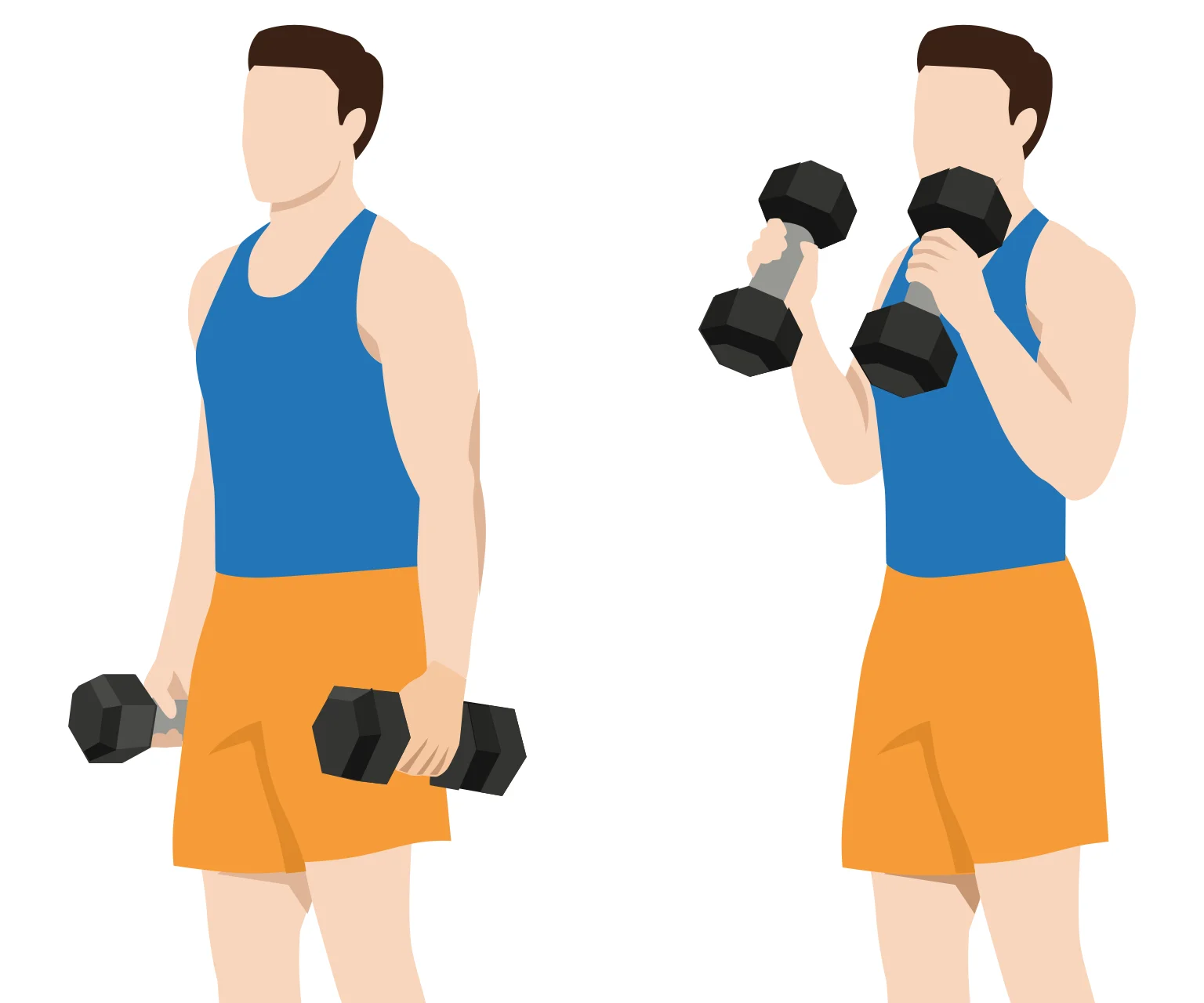
Hammer curls target a different part of your arm muscles compared to traditional curls. The bicep curls in this routine primarily target your biceps, but hammer curls put more emphasis on your brachialis and brachioradialis. This allows for a more comprehensive and balanced development of your arm muscles.
The key different between hammer curls and bicep curls is your grip. In the hammer curl, you use a neutral grip (palms facing each other), where most bicep curls use a supinated grip (palms facing up).
How to do
- Stand upright, holding a dumbbell in each hand. Your palms should be facing each other.
- Keeping your upper arms stationary, curl the weights up. Keep going until your biceps are fully contracted.
- Hold for a moment at the top of the movement.
- Finally, slowly lower the dumbbells back to the starting position.
- Repeat for the desired number of reps.
Read more: How to Do Standing Hammer Curls
Preacher curl machine
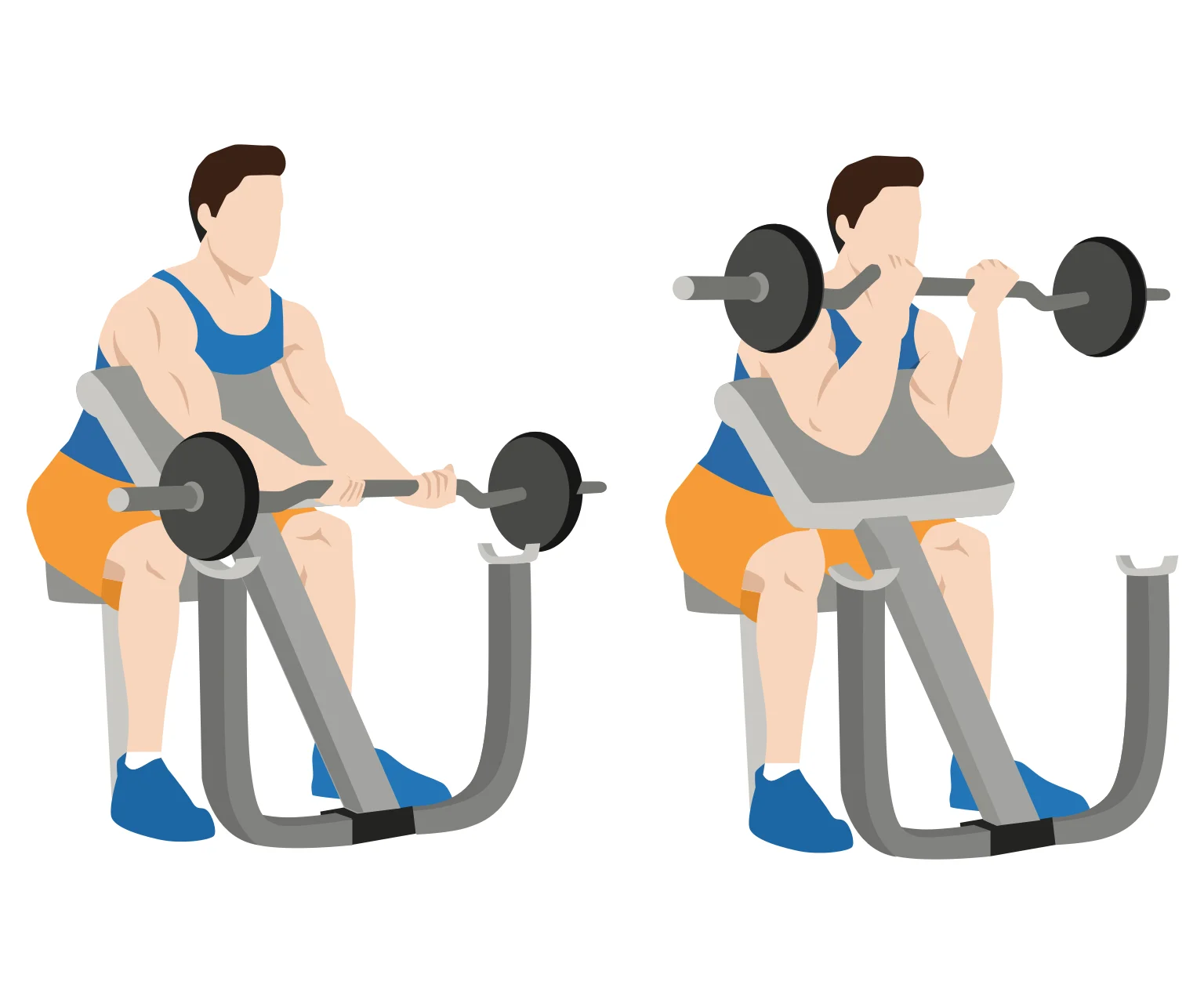
The preacher curl bench specifically isolates your biceps by stabilizing your arms against the preacher bench. This limits the involvement of other muscles and allows you to focus entirely on your biceps. It also helps prevent swinging the weights or the use of momentum to assist the lift.
The preacher curl also engages your brachialis and brachioradialis as secondary muscles, since they assist with flexion of your elbows.
How to do
- Adjust the preacher bench so your upper arms lie flat on the pad.
- Grab the handles with an underhand grip. Your arms should be fully extended in the starting position.
- Curl the weight up in a slow controlled movement. Keep your upper arms firmly on the pad.
- Squeeze for a moment at the top of the movement.
- Finally, slowly lower the bar back to the starting position.
- Repeat for the desired number of reps.
Read more: How to Do Preacher Curls
Triceps rope pushdowns
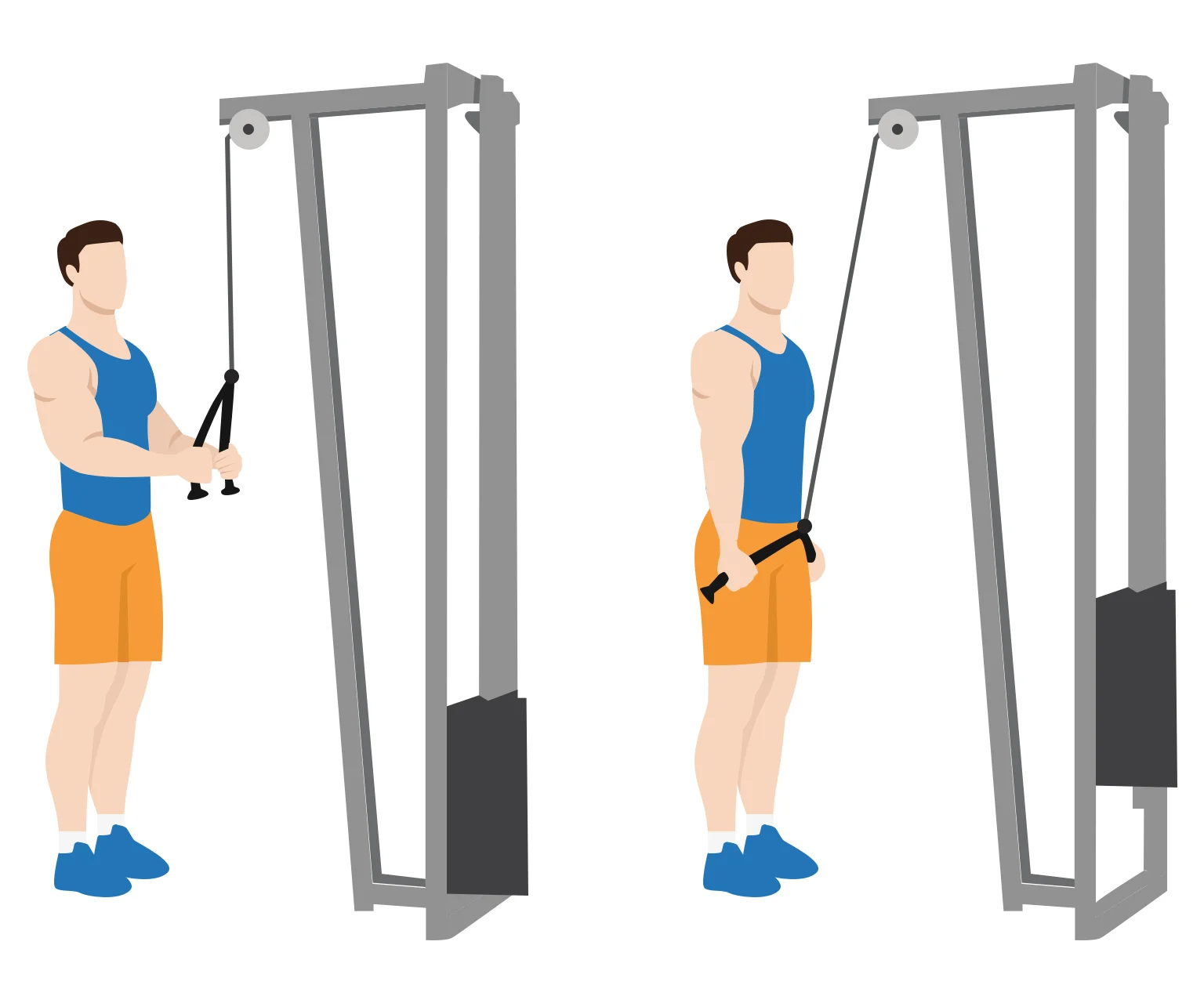
For your triceps, our routine contains 3 triceps isolation exercises – 1 triceps pushdown and 2 tricep extensions. Working your triceps alongside your biceps ensures balanced development of your arm muscles.
The first triceps exercise is the triceps rope pushdown. This sees you push down on a rope attached to a high-pulley cable, fully extending your arms at the peak of the movement.
This exercise primarily targets your triceps, but will work your shoulders and lats to a lesser extent.
How to do
- Stand in front of a cable system with a high pulley. Use the rope attachment.
- Grab the rope with both hands. Your elbows should be close to your torso.
- Without moving your upper arms, push the rope down until your arms are fully extended. Keep your elbows fixed in place.
- Hold for a moment at the peak of the movement.
- Finally, slowly bring the rope back up to the starting position.
- Repeat for the desired number of reps.
Read more: How to Do Triceps Rope Pushdowns
Triceps overhead extensions
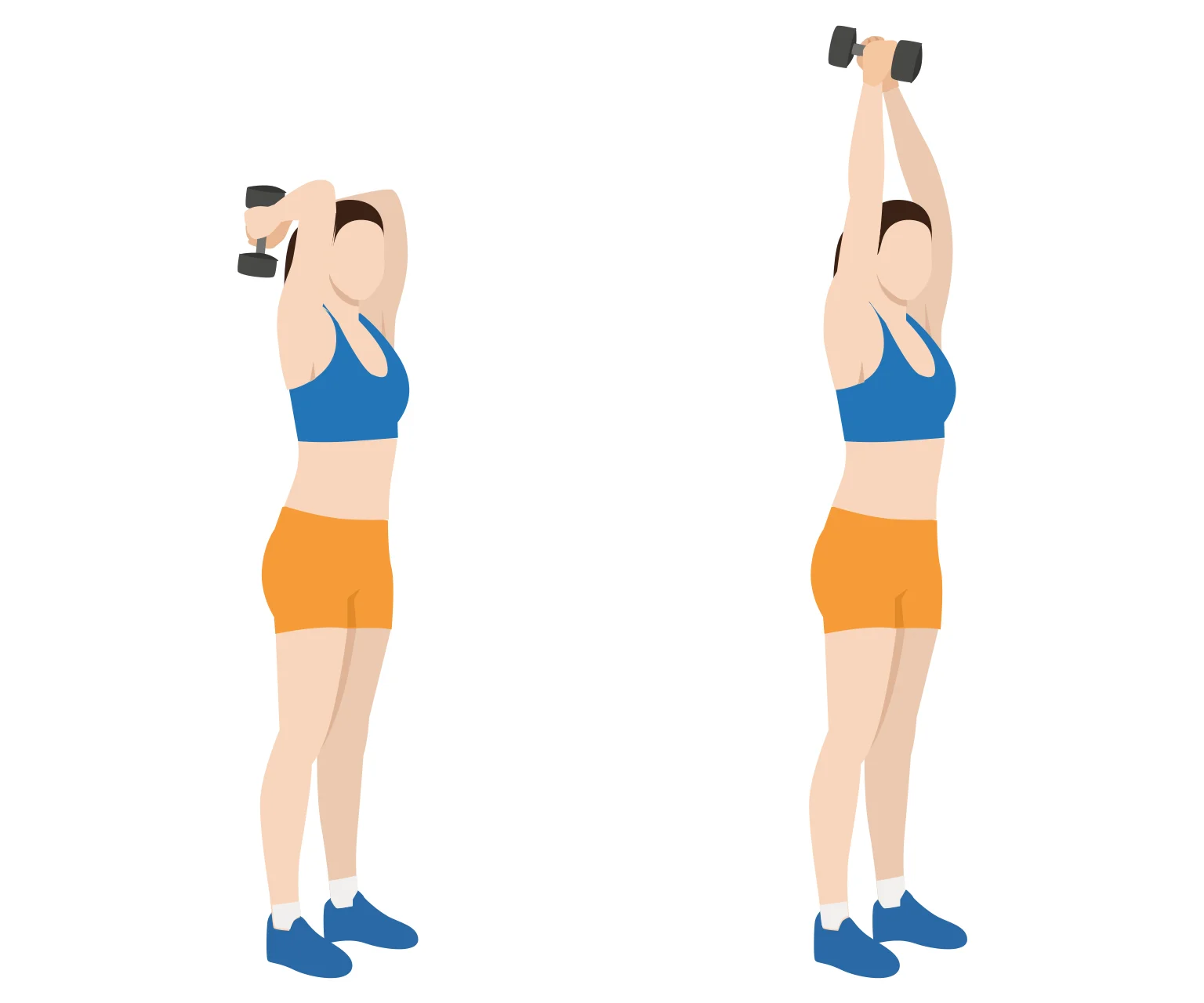
Triceps overhead extensions are an excellent addition to your arm day workout. This is because they isolate your triceps, helping you strengthen and tone your triceps muscles.
Since you perform this exercise holding a dumbbell above your head, it also challenges your stability and core strength, too.
How to do
- Stand with your feet shoulder-width apart.
- Extent your arms above your head, holding a dumbbell with both hands. Keep your elbows close to your ears.
- Without moving your upper arms, slowly bend your elbows to lower the dumbbell behind your head. Keep going until your elbows are at a 90 degree angle.
- Pause for a moment.
- Finally, contract your triceps to straighten your arms and lift the dumbbell back to the starting position.
- Repeat for the desired number of reps.
Read more: How to Do Triceps Overhead Extensions
Skull crushers

The final triceps isolation exercise is performed in the lying down position. This hits your triceps at a slightly different angle, ensuring all three heads of your triceps are worked evenly.
How to do
- Lie on a flat bench.
- Hold a pair of dumbbells above your head.
- Without moving your upper arms, lower the dumbbells back just behind your head. Keep going until your elbows are at a 90 degree angle.
- Pause at the bottom of the movement.
- Finally, contract your triceps to fully extend your arms back to the starting position.
- Repeat for the desired number of reps.
Read more: How to Do Skull Crushers
Tips
To make the workout less challenging
If you are new to training or find the workout too difficult to perform with proper form, here are some tips you can use to modify the workout. These tips will make the workout less challenging:
- Use lighter weights – If you find it difficult to complete the full rep range, start with a lighter weights. This allows your muscles to build some foundational strength, before you gradually increase the weight to make the exercises more challenging. Using a lighter weight also allows you to master the proper form, which will reduce your risk of injury as you start to lift heavier.
- Fewer sets – We recommend 3-4 sets of each exercise in the routine. But, if you are new to training or coming back after a long break, you can start with 1 set and gradually increase over a few weeks.
Proper form
Using good form is crucial in any workout, and these bicep and tricep exercises are no exception. As well as reducing the risk of injury, maintaining proper form also makes your workouts more effective. This is because you are targeting the right muscles and not putting unnecessary strain on other parts of your body.
For both bicep curls and tricep extensions, ensure you keep your elbows close to your body through the entire movement.
You should perform each rep with slow, controlled movements. This also reduces the risk of injury and makes the workout more effective.
